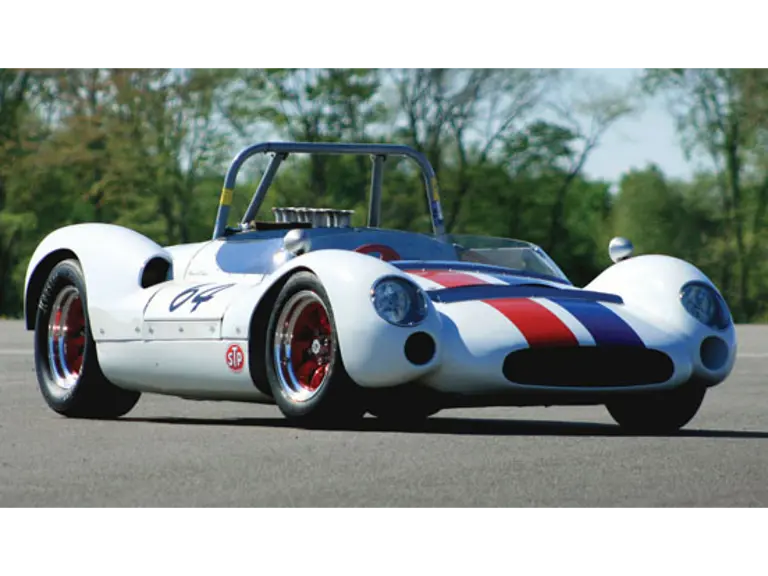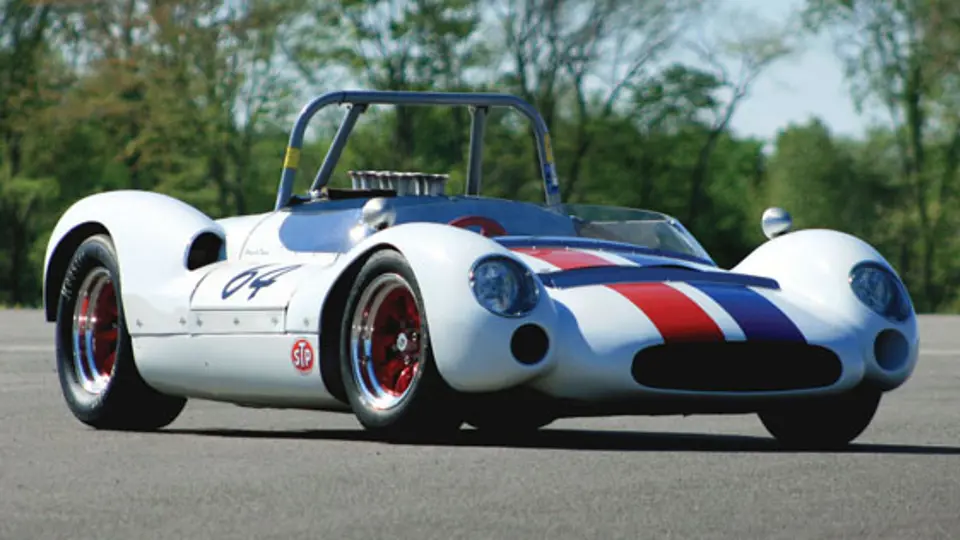Charles Cooper and his son, John, began racing after the Second World War. Originally the two were interested in trials. When the 500 Club began establishing a national race category, the pair built themselves a racecar based on a crashed Fiat Topolino sitting in the Cooper garage known as the T2. Interestingly, a Cooper designed T1 based on an Austin Seven had been built in 1936.
Through Charles’ previous prewar connections, a racing engine was fitted in the rear of the T2. The car proved effective when it debuted in 1946 and another was finished. The production of these 500-cc racing cars began in 1948 and would continue over the next decade, and in just three short years, the Cooper name became known throughout the world. At the same time, the two began building a more powerful racing car. Soon, victories in both the 500-cc and 1,100-cc cars became legion, with the smaller versions resulting in Britain dominating Formula 3 racing.
It was only natural that the Coopers would build a sports car based on the design of their solo driver cars. These cars were powered by various engines, but it wasn’t until an enlarged MG unit was fitted in the Cliff Davis racecar that the Cooper-MG sports racers began making a name for themselves.
One of the first Cooper attempts to build a car with a power-weight ratio comparable to the far more expensive European designs was a very fast Alfa Romeo Disco Volante-inspired body. It was powered by a 1.5-liter Connaught engine.
The Cooper-Bristol Formula 2 car became an overnight sensation in 1952, driven by Mike Hawthorn, who would go on to become the 1958 Formula 1 World Champion for Ferrari. This same Cooper car was later transformed into a two-seater sports racer in 1953. These successful sports racer 1100-cc and 1500-cc Coventry-Climax-powered Coopers were driven by Stirling Moss, Roy Salvadori, Jack Brabham and others. By 1955, Coopers were racing with Mercedes-Benz, Ferrari, Maserati, Connaught and Vanwall. Cooper designs continued to win in both Formula and sports racing and, by the 1960s, were recognized as a world leader.
Cooper-Climax Formula One cars would win the 1959 and 1960 Constuctor's Championship with their rear-engined machines propelling Jack Brabham to the Driver's Championship in the same years. Stirling Moss and the legendary Bruce McLaren would also contribute in winning the Constructor's Championships.
Cooper's success in racing was well known by American racing aficionados. By the late 1950s, American drivers John Bentley, Ed Hugus and Bob Drake were celebrating victories behind the wheel of a Cooper. Ken Miles was winning in a Cooper-Porsche, and by the 1960s, Hap Sharp was buying one as well. Another customer was a young Texas up-start by the name of Jim Hall, who bought himself a Cooper Monaco racecar.
The smooth body of the Cooper Monaco was built on a tubular chassis and the original plan was have it powered by a four-cylinder Coventry-Climax engine. Americans such as Hall, Penske and Shelby were keen to see what the Cooper Monaco was capable of with far more power, and so was Chevrolet. In theory, the Automobile Manufacturer’s Association had banned itself on racing involvement, but Chevrolet, as did others, encouraged outside groups. Chevrolet was keen to prove the attributes of its new aluminum block 327 cubic inch V-8 engine through Roger Penske.
Penske sent the lightweight, but strong, Cooper space frame to Troutman and Barnes. The rear of the frame was modified to clear and carry the V-8 engine, and additional bracing and larger tubing were welded into place. The radiator and oil coolers were altered, and additional saddle fuel tanks were mounted on each side of the cockpit. The Cooper-Chevrolet soon proved a point. Nearly 50 of the 86 Cooper Monacos built were sold to Carroll Shelby and destined to become Ford-powered King Cobras.
CM 3-64 is believed to be one of the last Cooper Monaco sports racers built. Visually, this very original Cooper Monaco is very similar to the look of the Shelby King Cobras. It was originally sold as a rolling chassis to Jack Brewer of Elmira, New York. Evenden, a racecar builder in Horseheads, New York, built and fitted a 327-cubic inch V-8 with Hillborn injectors, a BMCD transaxle, Eaton half-shafts, Auto Meter instruments and Ford linkage to the racecar's gearbox. Body modifications included cutting holes for the transaxle and velocity stacks, the cutting away of the fender skirts and an opening in the hood for cooling. Other changes included the re-routing of the exhaust, moving the cooling system and putting the short pipes straight up.
After a year of local racing, the Fruhoff Yellow Cooper Monaco was sold and went through a number of hands before Tom Foreman campaigned it in SCCA events in the late 1960s. The Cooper Monaco was sold again around 1970 and modified to bring it up to “A” sports-racer specifications. It again passed through various racers’ hands, the car was purchased in 1977 with the intent of restoring it to as original condition as possible, while keeping it eligible for racing. Previous owners were contacted during the restoration, and all of the original parts, including body panels and the driver’s seat, were retrieved.
By 1984, CM 3-64 had been rebuilt and, except for a larger nose opening and a few other additional cut-outs to assist cooling, was very much like it was in 1964. The Cooper was then purchased by a racer who subsequently sold it with a blown engine in need of a rebuild. It was bought by a vintage racer who enjoyed competing with the Cooper Monaco in SVRA and HSR events from 1986 to 1998, after which it changed hands again.
A nut-and-bolt restoration was completed in 2006 by a collector of competition and sports vehicles. This very authentic 1964 Cooper Monaco, bearing the race number 64, is spectacularly painted in an all-American red, white and blue scheme. CM 3-64 retains all its original panels and frame and comes powered by a new 600-hp 327-cid Kinsler-injected V-8 mated to its original gearbox. The Cooper is also accompanied by its original and fully rebuilt 327-cubic inch engine.
Beautifully presented and requiring only a keen driver, this is the Cooper Monaco that set the track record at Whiteface Mountain back in 1964. The car includes the original time sheets, complete ownership records and documentation that traces its vintage and SCCA racing history. It is said to be race prepped and ready to add to its already impressive list of race outings.



 | Santa Monica, California
| Santa Monica, California


